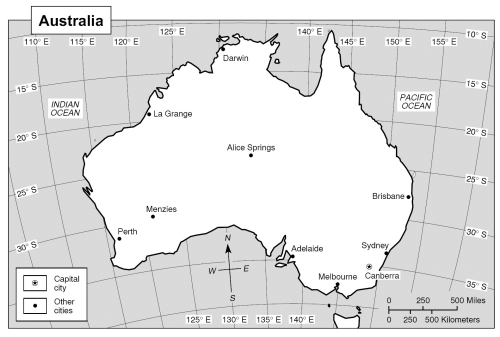5.03 Scales, maps and ratios
An architectural floor plan is an example of a scale drawing. A scale drawing is a diagram of an object in which the dimensions are in proportion to the actual dimensions of the object.

A floor plan is an example of a scale drawing.
The scale of a scale drawing tells us how the drawing's dimensions and the real-life dimensions are related. For example, the scale $1$1 in. : $12$12 ft. tells us that $1$1 inch in the floor plan drawing represents $12$12 feet in the actual building.
Graphic scale
A graphic scale represents a scale by using a small line with markings similar to a ruler. One side of the line represents the distance on the map, while the other side represents the true distances of objects in real life. By measuring the distance between two points on a map and then referring to the graphic scale, we can calculate the actual distance between those points.

In this picture, you can see that $1$1 cm on the scale represents $250$250 kilometers in real life and $1.5$1.5 cm on the scale represents $250$250 miles in real life.
Verbal scale
A verbal scale uses words to describe the ratio between the map's scale and the real world. For example, we could say "One inch equals fifteen miles" or we could write it as $1$1 in = $15$15 miles. This means that one inch on the map is equivalent to $15$15 miles in the real world.
Scale ratios
The examples above include scales with units. A scale with two dimensions listed in the same unit can be written without units this is called the scale ratio.
| Scale with units | Scale without units |
|---|---|
| $1$1 in. : $4$4 ft. | $1:48$1:48 |
The two scales above are equivalent because $4$4 feet is is equal to $48$48 inches. The ratio of 1:48 can also be written as the fraction $\frac{1}{48}$148. This fraction is called the scale factor. It tells us that the dimensions of the model are $\frac{1}{48}$148th the size of the dimensions in real life.
Here are some helpful unit conversions before we get started with examples.
| $1$1 ft | $=$= | $12$12 in |
| $1$1 yd | $=$= | $3$3 ft or $36$36 in |
| $1$1 mi | $=$= | $1760$1760 yd |
| $1$1 cm | $=$= | $10$10 mm |
| $1$1 m | $=$= | $100$100 cm |
| $1$1 km | $=$= | $1000$1000 m |
Worked examples
Question 1
Evaluate: Convert the following situation to a proper scale ratio: $5$5 cm on the map is equivalent to $25$25 m in real life.
Think: Remember we need to have our two quantities in the same unit of measurement. Let's convert everything to centimeters. Once we have equivalent quantities, we can write the scale factor.
Do: First, convert to centimeters
| $25$25m | $=$= | $25\times100$25×100 cm |
$1$1m $=$= $100$100cm. |
| $=$= | $2500$2500 cm |
Then, rewrite the ratio
| $5$5cm : $25$25m | $=$= | $5$5cm:$2500$2500cm |
Using the conversion above. |
| $=$= | $5:2500$5:2500 |
Cancel the units. |
|
| $=$= | $1:500$1:500 |
Simplify the ratio. |
Question 2
Evaluate: Given that the scale on a map is $1$1:$50000$50000, find the actual distance between two points that are $8$8 cm apart on the map. Give your answer in kilometers.
Think: This means that $1$1 cm on the map represents $50000$50000cm (or $500$500m) in real life.
Do: So to figure out how far $8$8cm represents, we need to multiply $8$8 by $50000$50000. Then convert to km.
| $8\times50000$8×50000 | $=$= | $400000$400000 cm |
| $=$= | $4000$4000 m | |
| $=$= | $4$4 km |
Now let's look at how we can do this process in reverse.
Question 3
Evaluate: Given that the scale of a map of a garden is $1$1:$250$250 , how far apart should two trees be drawn on the map if they are to be planted $375$375 m apart?
Think: In this question, we are going from big units to small units, so we need to use division.
$375\div250=1.5$375÷250=1.5cm
Do: This means that the trees should be drawn $1.5$1.5 cm apart on the map.
Practice questions
Question 4
On a map $3$3 cm represents an actual distance of $9$9 m.
Convert $9$9 meters to centimeters.
Write the distance on the map to the actual distance as a ratio.
$3:\editable{}$3:
Write the distance on the map to the actual distance as a simplified scale ratio.
$1:\editable{}$1:
Question 5
Bianca is looking over a map of her local area and notices that the scale of the map is given as $1:100$1:100 in the map legend.
Find the actual distance (in centimeters) between two points which are drawn $12$12 cm apart on that map.
Find the distance in meters between the two points from part(a).
Question 6
The scale on a map is $1:500000$1:500000. How far apart on the map should two train stations be drawn if the actual distance between the stations is $100$100 miles? Using the fact $1$1 mile $=$= $63360$63360 inches, express your answer in inches, rounding to 2 decimal places if necessary.